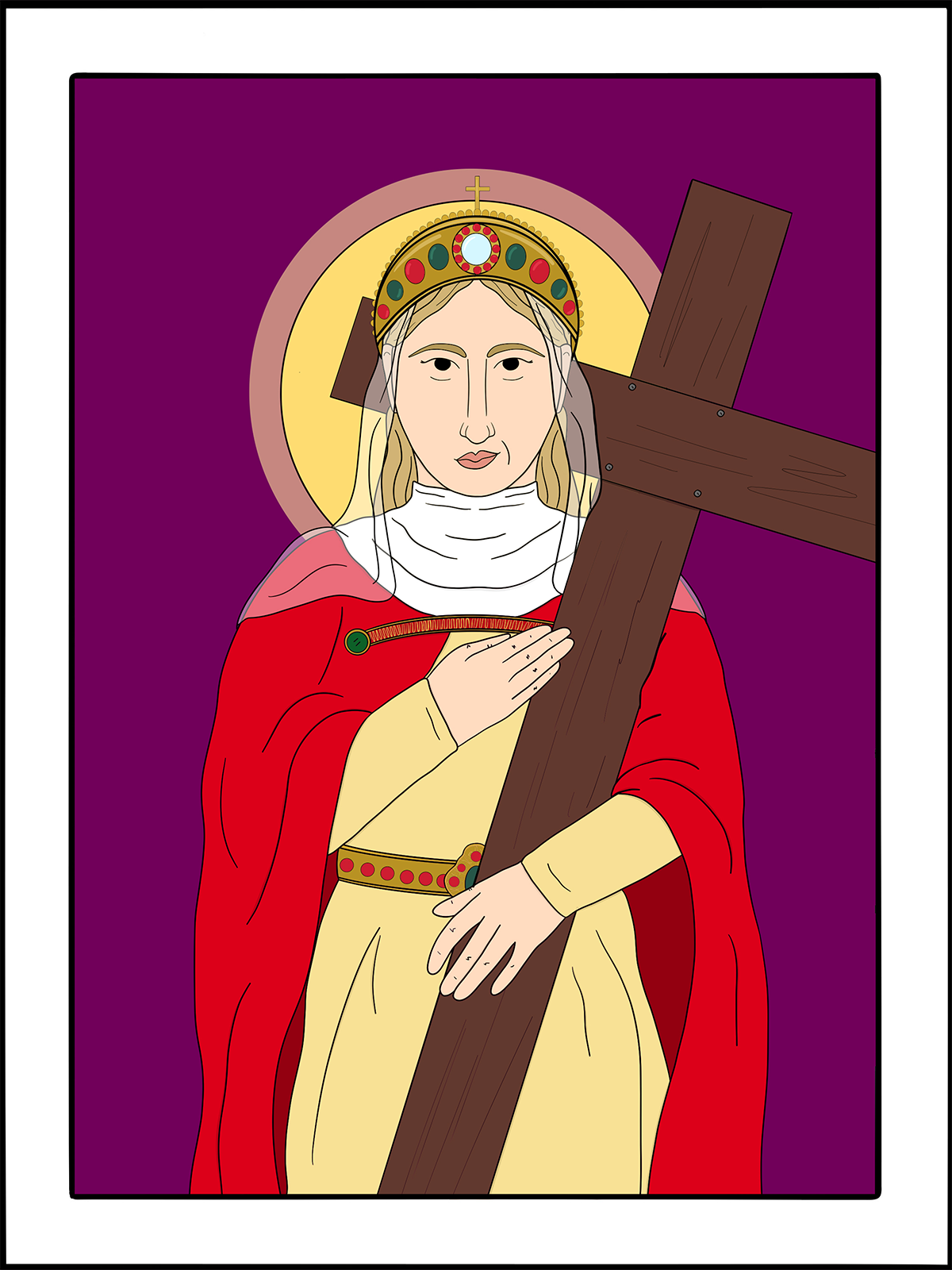
May 22
Helena of Constantinople
Protector of the Holy Places, 330
art by Rev. Kirsten Kohr of Geneva, Ohio Most Merciful God, who blessed your servant Helena with such grace and devotion to you that she venerated the very footsteps of our Savior; Grant unto us the same grace that, aided by her prayers and example, we also may always behold your glory in the cross of your Son. Through the same Jesus Christ our Lord; who lives and reigns with you, in the unity of the Holy Spirit, one God, for ever and ever. Amen.
Helena was the mother of the Emperor Constantine of Rome and a devout Christian, but she is perhaps most renowned for her discoveries of holy sites related to the life of Jesus.
Helena was born into a lower-class family in the middle of the third century, though we are unsure about where. Many believe she was born in Drepana (now Helenopolis) in northern Asia Minor, but this is uncertain. There are also later legends that place her birth in England, and for that, she is honored with numerous holy wells across the country. Regardless of birthplace, she would eventually become the wife, or at least consort, of Constantius I, who was co-emperor and ruled over Gaul (France) and Britannia (Britain). During this time Helena would give birth to a son, Constantine, in the year 272, but she would soon be divorced and live in the East in the palace of Diocletian.
Once her son gained the Western Empire in the year 312, she returned to Rome and was granted the title Augusta, or Empress, in 325. It was during this time that she made her famous journey to the Holy Land to find the places mentioned in the Gospels, with the most important finds being the Cross of the Crucifixion and the site of the Resurrection.
Long after the destruction of Jerusalem in the year 70, the Emperor Hadrian had the area rebuilt. As part of this restoration, a pagan temple was built on the very site of the Resurrection. Helena ordered this temple destroyed, had the area excavated, and discovered three crosses along with the epitaph that said, “Jesus, King of the Jews.” To ensure it was truly the cross of Christ, a woman near death was carried to the site and touched each cross in turn. On the third one she was cured and Helena declared this to be the one. She ordered that a church be built which would be called the Church of the Holy Sepulchre.
Regardless of the truth of the legend itself, it is certain that she claimed to have found this and many other holy sites and relics on her journey, and that many of these remain prominent sites of Christian pilgrimage to this day. Unfortunately, she would not live to see the completion of the Church of the Holy Sepulchre, as she died in 330, five years before its completion.
Helena also had a reputation as a faithful Christian who cared for the poor. After her death, several towns would be named in her honor and she would also eventually be given the title of “Equal to the Apostles” in the Orthodox Church. Helena’s faith in her Lord was not a detached spirituality, but an embodied and historical one, such that she eagerly sought to find the very places where the Son of God had walked, taught, died, and rose again.
Excerpted directly from “Lesser Feasts and Fasts 2022,” p. 240-241.

